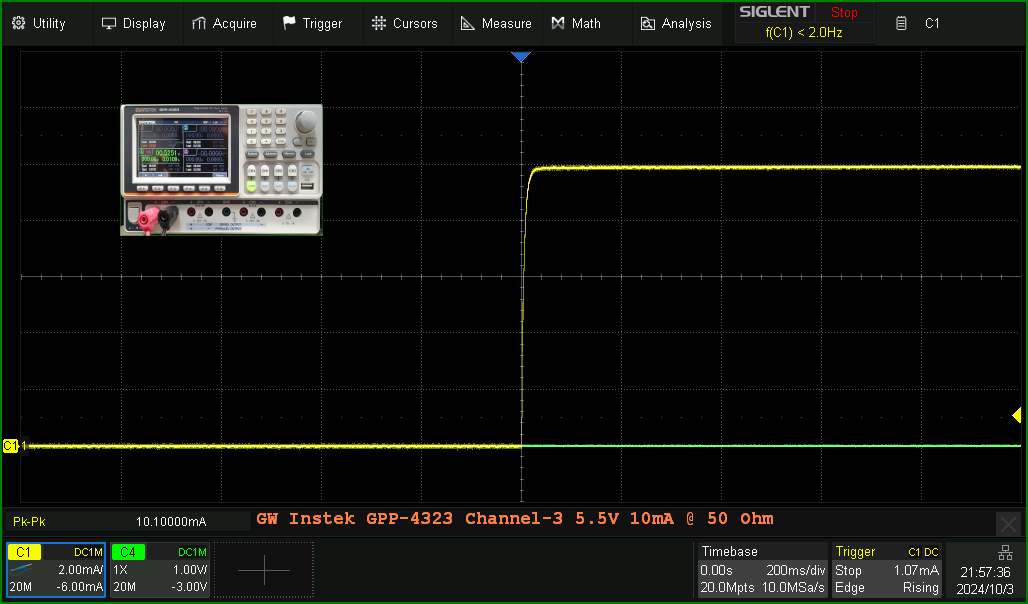Hi,
As promised some measurements I made on LAB power supplies I own that have an enable key that are here on the test bench.
Almost all measurements were made under the same conditions.
Of the Agilent and the Siglent LAB power supply I have made additional measurements with in the case of the Siglent a higher current of 35ma and in the case of the Agilent I have increased the voltage and the current setting, this to investigate to what extent their behavior depends on the current setting.
For convenience I have placed a picture of the LAB power supply under test in each picture.
Basic settingsVoltage setting 8V
Current 10mA
The power supply is switched on with the enable button.
Two measurements per LAB power supply channel were taken using the single shot method on the scoop.
This to get a better understanding of the power-on behavior of the LAB power supply.
A Pk-Pk mA measurement is visible at the bottom left in yellow.
Let's start with the Rigol DP832.First channel-1, but... that is R&S behavior


.
Let's zoom in on the horror.

.
And now to channel-2 which, by the way, has the same characteristics and virtually the same peak current of about 25mA.

.
And zoomed in again, that looks distinctly different from channel-1.

.
Channel three of the Rigol can only deliver a maximum of 5.3V and the current is again set at 10mA.

.
Hir is clearly visible that this channel behaves well, the peak current remains below 10mA.

.
The following pictures are of a single channel Siglent LAB power supply and that is the SPD1305.
This Siglent is not so kind to its load at this small current, 36mA peak current.

.
Lets ZOOM in.
It takes 30mSec for the current to drop to double the value of 20mA, you can do better Siglent!

.
I wanted to see if this Siglent Power Supply shows a different behavior at larger currents, below is a measurement at 35mA.
At this 35mA, the behavior is much better.

.
Only a small overshoot is visible and the abberations just after power-up are not significant.

.
Now shall we go watch some more horror?

WTF 130ms more than 160mA!

.
One positive is that the pulse is completely clean.

.
Now let's see if at 200mA the behavior is below, I increased the voltage to 12V.
There is comparatively less overshoot now, but, but.... 500msec long!

.
Now to the last one LAB power supply that behaves better and that is the GW Instek GPP4323.
This Power Supply has four channels and channel one and two are the same so I am only showing channel one.
Look R&S, Agilens and Rigol, this is how it should be.

.
Immediately after turning on, a small abberation is visible but that is not important, the peak current remains below the set 10mA.

.
This is a measurement performed on channel-4.
Looks good.

.
There are some abberations in the beginning, but the peak current remains below the set value.

.
And now for the final measurements, still the GW Instek Power Supply and now channel-3.
This channel can only deliver a maximum of 5.5V and that is what the measurements below were made with.

.
A little hickup at the beginning, but well below the set peak current, no problemo, are you watching R&S, this is how it should be *grin*.

.
From these measurements, it is clear to see that the “ current loop” of the GW Instek is a lot faster than the other Power Supply's I measured.
Many of the Power Supply manufacturers make the current loop comparatively slow, then the power supply as a whole is easier to keep “stable”, but everything has its price, which is also visible in my measurements an from others in this topic.
I hope to see more measurements from you!
Greetings,
Bram





